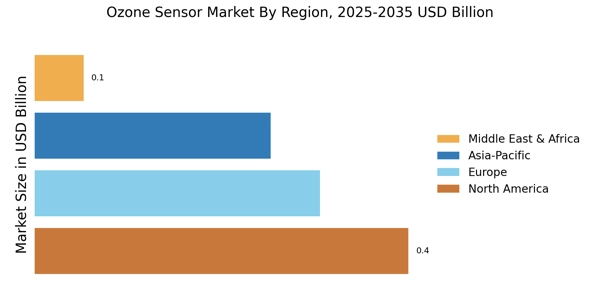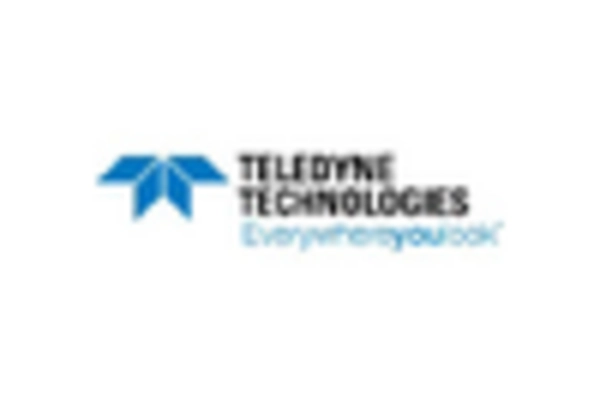Rising Public Health Concerns
The Ozone Sensor Market is witnessing growth due to rising public health concerns associated with ozone exposure. Increased awareness of the health risks posed by elevated ozone levels, such as respiratory issues and cardiovascular diseases, is prompting both consumers and businesses to invest in ozone monitoring solutions. Public health campaigns and educational initiatives are further amplifying this awareness, leading to a heightened demand for ozone sensors in residential, commercial, and industrial settings. As a result, the market is expected to expand, with projections indicating a potential increase in sensor sales by over 15% in the next few years, as stakeholders prioritize health and safety.
Growing Industrial Applications
The Ozone Sensor Market is experiencing growth due to the increasing adoption of ozone sensors in various industrial applications. Industries such as food processing, water treatment, and chemical manufacturing are recognizing the importance of ozone monitoring for ensuring safety and compliance. Ozone is utilized in disinfection processes, and accurate monitoring is essential to maintain optimal levels while preventing harmful exposure. As industries expand their operations and seek to enhance safety protocols, the demand for reliable ozone sensors is likely to rise. Market analysts project that the industrial segment will account for a significant share of the ozone sensor market, with growth rates potentially exceeding 12% in the next few years.
Increasing Regulatory Standards
The Ozone Sensor Market is significantly influenced by the tightening of regulatory standards aimed at controlling ozone levels in the atmosphere. Governments and environmental agencies are implementing stricter regulations to mitigate the adverse effects of ozone pollution on health and the environment. For example, the establishment of air quality standards by agencies has necessitated the deployment of reliable ozone sensors for compliance monitoring. This regulatory landscape is expected to drive demand for high-quality ozone sensors, as industries seek to adhere to these standards. The market is likely to see a substantial increase in sensor adoption, particularly in sectors such as manufacturing and transportation, where compliance is critical.
Expansion of Smart City Initiatives
The Ozone Sensor Market is benefiting from the expansion of smart city initiatives that prioritize environmental monitoring and sustainability. Cities are increasingly adopting smart technologies to enhance urban living, which includes the deployment of ozone sensors for air quality management. These sensors provide critical data that informs policy decisions and urban planning, contributing to improved air quality. The integration of ozone sensors into smart city frameworks is likely to drive market growth, as municipalities seek to leverage data analytics for better environmental outcomes. This trend is expected to result in a significant uptick in sensor installations, with estimates suggesting a market growth rate of around 10% in the coming years.
Technological Innovations in Ozone Sensors
The Ozone Sensor Market is experiencing a surge in technological innovations that enhance sensor performance and reliability. Advanced materials and miniaturization techniques are being developed, leading to more sensitive and accurate ozone detection. For instance, the integration of nanotechnology in sensor design has shown promise in improving detection limits and response times. Furthermore, the advent of IoT-enabled sensors allows for real-time monitoring and data transmission, which is increasingly sought after in various applications, including environmental monitoring and industrial safety. As a result, the market is projected to grow at a compound annual growth rate (CAGR) of approximately 8% over the next five years, driven by these technological advancements.


















Leave a Comment